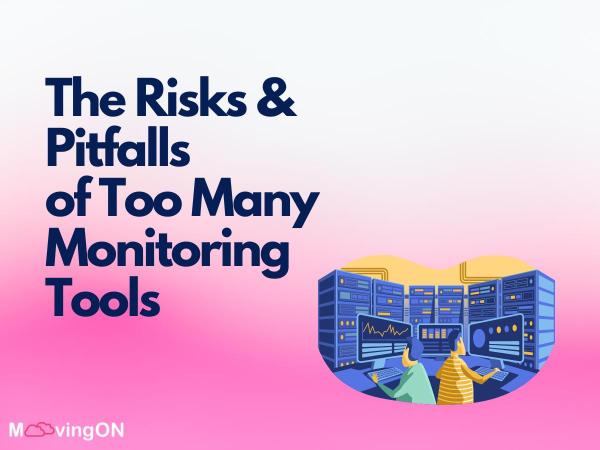The Risks and Pitfalls of Too Many Monitoring Tools
If you are like most organizations, your technology environment is a complex mixture of tools needed to run your business. In this environment, monitoring and observability are critical to making sure everything is running smoothly. You use monitoring tools to measure server resources, log-parsing tools for troubleshooting, application tools to observe application performance, and audit-request tools to comply with regulations.
While these are all valid observability needs, there are risks to overdoing it by introducing too many tools. Here are some ways to avoid monitoring proliferation when developing your observability strategy.
What Is Monitoring Proliferation?
Observability is important. The cost of downtime makes this strategy a necessity.
Sometimes, however, the value in monitoring is lost when companies “over-monitor.” The rationale is that more tools mean more data, which means more insight. However, that’s rarely the case. Too much of a good thing can be a bad thing.
Sumo Logic’s recent 451 Research survey highlights it best. The survey showed that 39% of respondents were juggling 11 to 30 monitoring systems to keep an eye on their application, infrastructure, and cloud environments – with 8% using between 21 and 30 systems. This overabundance of systems is what is termed monitoring proliferation. These systems ultimately created inefficiencies in observability rather than the insight they were designed to provide.
What Causes Monitoring Proliferation?
Digital transformation efforts lead companies to find new ways to be agile and remain competitive in a changing landscape. Cloud solutions enable this agility by providing a quick and easy way to create and manage environments. With each of these environments comes the need for effective monitoring. Many cloud vendors offer basic monitoring services. However, companies require much more than these basic offerings, leading them to implement more advanced tools.
The challenge is that different teams within the organization have their own specific monitoring needs. Thus, each ends up deploying monitoring tools to fit their unique requirements. DevOps needs to monitor development and deployment metrics; Service Reliability Engineering needs to keep an eye on application and service performance, while R&D has its own separate set of requirements. Many of the tools each team uses end up overlapping.
Too Many Cloud Monitoring Tools: What Are the Risks?
Using so many monitoring solutions wreaks havoc on the technology stack. The same tools implemented to help become a burden that drowns the team in information. Here are just a few of the challenges this problem presents.
Too Many Alerts
The proliferation of systems and the use of inadequate tools can lead to “alert fatigue.” It’s what happens when teams are inundated with an overwhelming number of alerts. So many, in fact that it is challenging to keep up. Many of these alerts often go unnoticed or disregarded as the team becomes desensitized to them. Another Sumo Logic study found that of respondents, 56% said they chase more than 1,000 alerts per day. Many of them report they can barely get to about half of them each day.
Lack of Context
Having too many monitoring tools can also lead to a lack of context when it comes to understanding the root cause of a problem. Each tool may provide a different view of the system, and it can be challenging to correlate the information provided by different tools to understand the underlying issue. This can make it difficult to troubleshoot and resolve problems in a timely manner.
Costly
Each tool needs to be individually purchased. The licensing costs grow with each new tool added to the stack. Many of these tools are packaged with several features that many companies will not use. They often end up using one or two features. This is essentially wasted money as huge portions of the system go untouched. Also, many companies use open-source solutions. While these tools are cost-effective, maintenance and administration are overhead.
Observability Without Relying on Too Many Monitoring Tools
Companies need to be nimble and keep up with the pace of change, which means avoiding expensive systems that drown them in data. The point of collecting alerts from cloud monitoring systems should be to use the data to inform business and operational decisions. This should be the driving force behind selecting a tool that provides the most comprehensive information.
Accomplishing this requires companies to make hard decisions on what is truly important. It is tempting to monitor every metric possible. However, it is important to determine the most important metrics needed to run smoothly without creating a sea of alerts.
One of the best ways to avoid the pitfalls of using too many systems is to invest in a single, comprehensive, and scalable solution. Observability solutions that can serve multiple use cases are more cost-effective and efficient. A comprehensive tool should collect metrics for your entire cloud-based environment and not just one or two parts of it. This will also safeguard against false positives because there won’t be as much data to analyze.
Monitoring is a tool to aid operational and business decisions. The wrong tools lead to chaos. The right tool provides valuable insight without overwhelming the team. If you’re drowning in alerts and data, it’s time to use a single platform for all your metrics. MoovingON is a provider of operational solutions for SaaS companies and other cloud solutions.
Reach out to us today to see how we can help you monitor your cloud systems more effectively.

